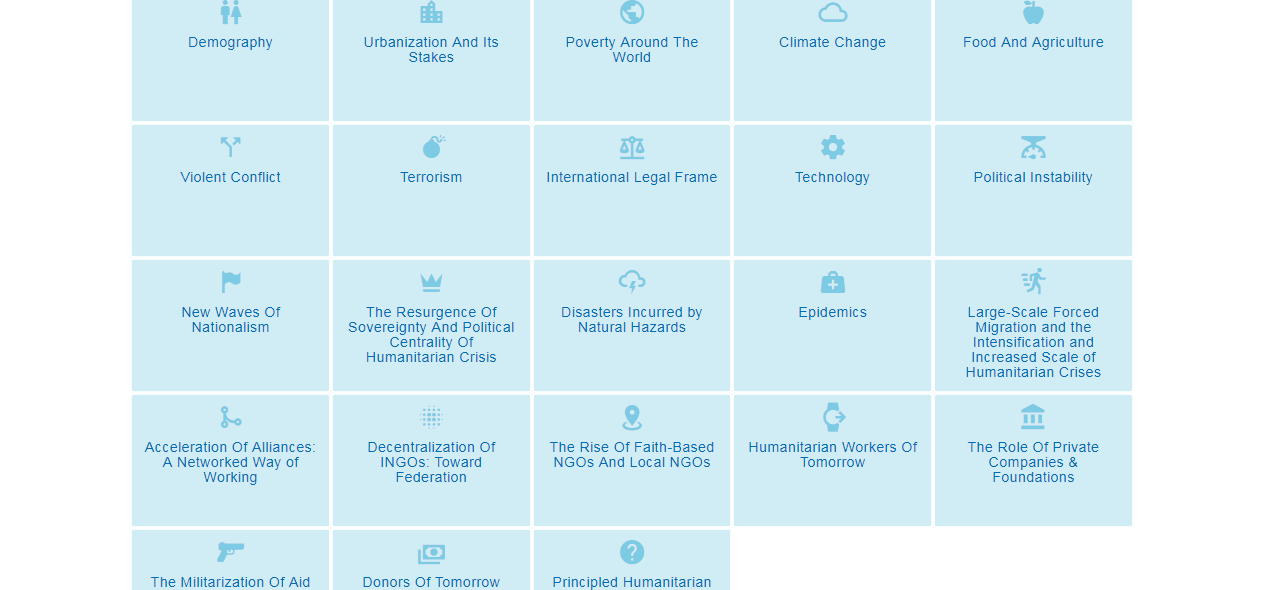Start Network’s Sarah Barr reports on the launch of Action Against Hunger’s new report The future of aid: INGOs in 2030, produced by the Inter-Agency Regional Analysts Network (IARAN).
I attended the launch of the Future of Aid report, which featured a varied and all women (!) panel. This bold report analyses 23 drivers of change likely impact humanitarian aid and international NGOs by 2030 and synthesises them into four potential scenarios.
These drivers of change include wide social, political factors such as urbanization, demography and violent conflict, alongside factors specific to INGOs, such as the rise of faith based and local NGOs and the decentralisation of NGOs.
The report says “We are on the threshold of a major shift. It is both a challenge for traditional actors and an opportunity for humanitarian leaders to create a more inclusive and effective humanitarian ecosystem that better reflects those within it and those it serves.”
The authors argue that significant need will remain for humanitarian aid. However, it also finds humanitarian organisations need to change their structures, operations, values and how they interact with each other and the wider world, to remain relevant and useful. It strongly endorses a networked approach, in line with the Start Network’s approach, where “INGOs challenge the competitive structure in which they operate to build a more collaborative response”.
The speakers at the launch were good and mixed – with IRIN, Overseas Development Institute (ODI) and Action Against Hunger represented, and for us at the Start Network their positions were more than familiar, with a few interesting points.
Technological disruption
The chair opened the discussion by encouraging us to think about the technologies which will become available over the next 10-15 years, in terms of the opportunities they will bring and how they could be disruptive, and work back from there.
Subsidiarity
There was overwhelming support for a networked humanitarian system, based on demand and subsidiarity. Heba Aly, Director of IRIN news presented the value that different actors (the private sector, local/national governments, citizen volunteers, diaspora, local NGOs) bring to the humanitarian system and raised very valid questions about what INGOs bring which cannot be attained elsewhere. It was a really nice endorsement of the approach we at the Start Network are taking, alongside perhaps being a reality check for some of our members.
Transformation
At the event there was lots of talk about transformation in the system, largely focused on localisation and cash. But the report delves further and presents five possible models for how international agencies may transform in future. These are interesting to consider, especially now as the Start Network is discussing its future structure through Start Evolves;
- INGO©. In this possibility, the INGO structure is built on a system of franchised national NGOs and private partners, coordinated by regional management.
- INGO Global Fund. Here, the INGO structure is a conduit for gathering and managing public, private funds and revenues.
- Fire-Fighting INGO. In this example the INGO structure is built on four levels (local, national, regional and global) which can be modulated in terms of where resources flow.
- INGO & Co. Here INGO support services (human resources, financial management etc.) are privatized and policy, lobbying, advocacy etc are managed in consortia.
- INGO At Your Service. In this example INGOs provide a valuable source of expertise on a demand driven basis to new humanitarian actors.
The Guardian followed up with a piece underlining the need for change among humanitarian actors, distilling the key message of the event into an unambiguous ‘change or die’ one liner.

